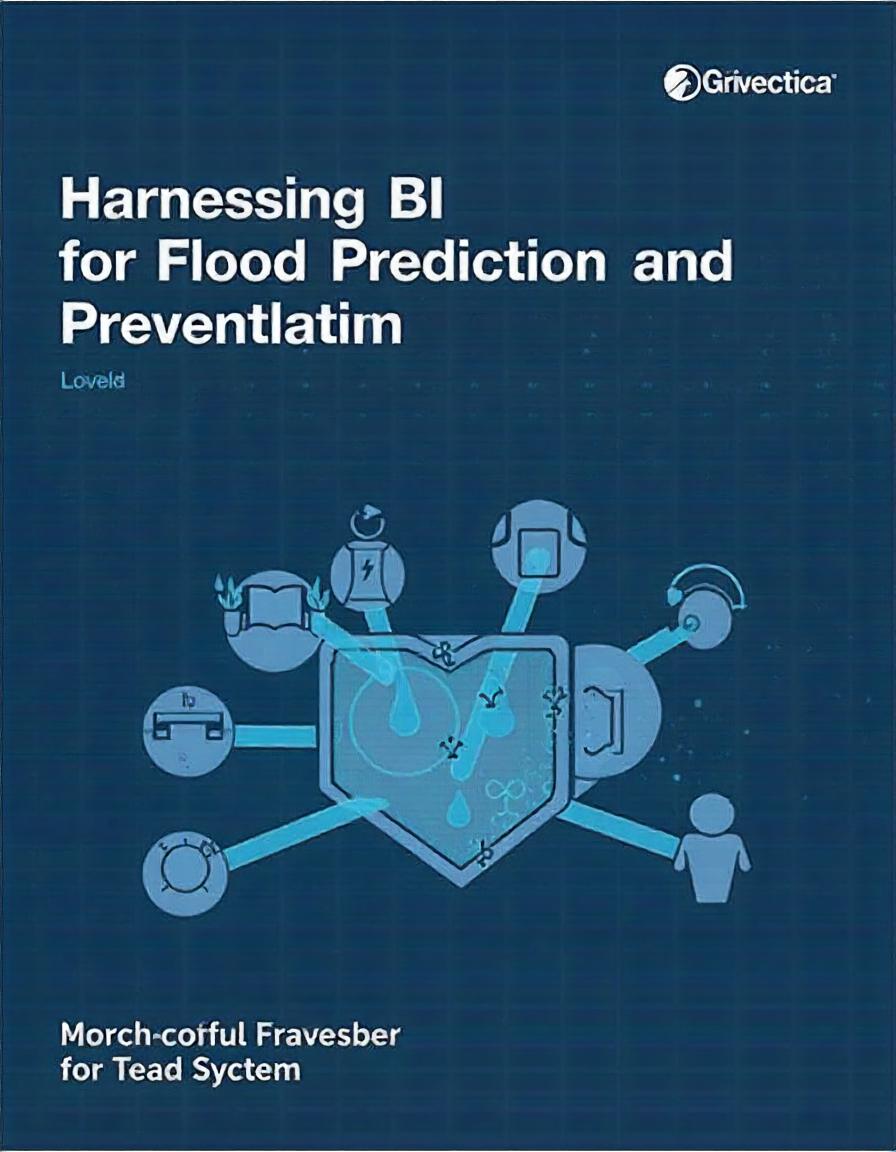Flooding is one of the most catastrophic natural disasters, and its impact is increasing due to climate change. The ability to predict and prevent floods is crucial for saving lives and reducing damage. This is where Business Intelligence (BI) steps in. By harnessing the power of BI for flood prediction and prevention, decision-makers can gather, analyze, and visualize data to better understand flood patterns and implement effective mitigation strategies.
In this article, we will explore ten ways in which BI is revolutionizing flood prediction and prevention, and how these methods are shaping the future of disaster management.
1. Real-Time Data Collection for Flood Prediction
One of the main advantages of using BI for flood prediction is the ability to collect real-time data. By leveraging sensors, satellite imagery, and weather stations, BI tools can gather comprehensive data on rainfall, water levels, and climate conditions. This data is crucial for accurate flood prediction models.
2. Data Integration Across Multiple Sources
Flood prediction requires data from various sources—meteorological departments, geographic information systems (GIS), and hydrological data. BI systems can integrate data from these diverse sources into a single platform, providing a holistic view. This integration is vital for creating reliable flood prediction models.
3. Predictive Analytics for Early Flood Warnings
Predictive analytics is a core feature of BI systems. With historical and real-time data, BI tools can use machine learning algorithms to predict future flooding events. Predictive models analyze trends and patterns to forecast when and where floods are likely to occur, giving early warnings to at-risk areas.
4. Visualizing Flood Risk Zones with BI Dashboards
Visualization is a powerful feature of BI. BI dashboards can map out flood-prone zones by visualizing data on topographical and hydrological conditions. These visualizations make it easier for governments and local authorities to identify high-risk areas and prioritize flood prevention measures.
5. Monitoring Water Levels in Real-Time
BI tools can monitor water levels in rivers and dams in real-time, helping authorities detect rising water levels before they become critical. Real-time alerts generated through BI platforms enable quick decision-making, helping to prevent floods or mitigate their impact.
6. Improved Collaboration Between Agencies
Effective flood prevention requires collaboration between different agencies, including government bodies, meteorologists, and emergency services. BI platforms enable seamless communication and data sharing, ensuring that all stakeholders are well-informed and can coordinate their efforts efficiently.
7. Historical Data Analysis for Flood Pattern Recognition
Analyzing historical data is essential for recognizing flood patterns. BI tools can analyze years’ worth of flood data to identify trends, helping experts predict how future floods might develop based on past occurrences. This helps in formulating long-term flood prevention strategies.
8. Scenario Simulation for Emergency Response Planning
BI allows authorities to simulate flood scenarios by modeling different weather conditions and water levels. Scenario simulations help governments prepare emergency response plans by predicting flood impacts under various conditions, ensuring a quicker and more organized response.
9. Resource Allocation and Risk Management
BI systems help in efficient resource allocation by determining which areas are most at risk of flooding. This allows authorities to deploy resources like sandbags, rescue teams, and medical services to the most vulnerable regions, minimizing flood damage and loss of life.
10. Post-Flood Analysis for Continuous Improvement
Once a flood has occurred, BI tools can analyze the event’s data to evaluate the effectiveness of flood prevention and response efforts. This post-event analysis helps refine predictive models, improve flood response strategies, and enhance future prevention methods.
Conclusion
The integration of Business Intelligence for flood prediction and prevention is transforming how governments and organizations respond to natural disasters. By combining real-time data, predictive analytics, and data visualization, BI empowers decision-makers to anticipate floods, mitigate their impact, and protect communities. As climate change continues to increase the frequency and severity of floods, the use of BI will only become more essential in safeguarding lives and infrastructure.
FAQ
Q1: How does BI improve flood prediction?
BI improves flood prediction by integrating real-time data from multiple sources, applying predictive analytics, and offering visual insights that help authorities forecast flooding events with higher accuracy.
Q2: Can BI help in reducing flood damage?
Yes, BI can significantly reduce flood damage by enabling early warnings, optimizing resource allocation, and coordinating efforts among various agencies to implement effective prevention measures.
Q3: What kind of data does BI use for flood prevention?
BI uses data from meteorological departments, hydrological systems, GIS, and real-time sensor data, including water levels, rainfall, and climate conditions.
Q4: Is BI applicable for small-scale floods?
Yes, BI can be adapted for both large-scale and small-scale flood prediction and prevention efforts. The real-time data and predictive models allow for flexible application depending on the region’s needs.



